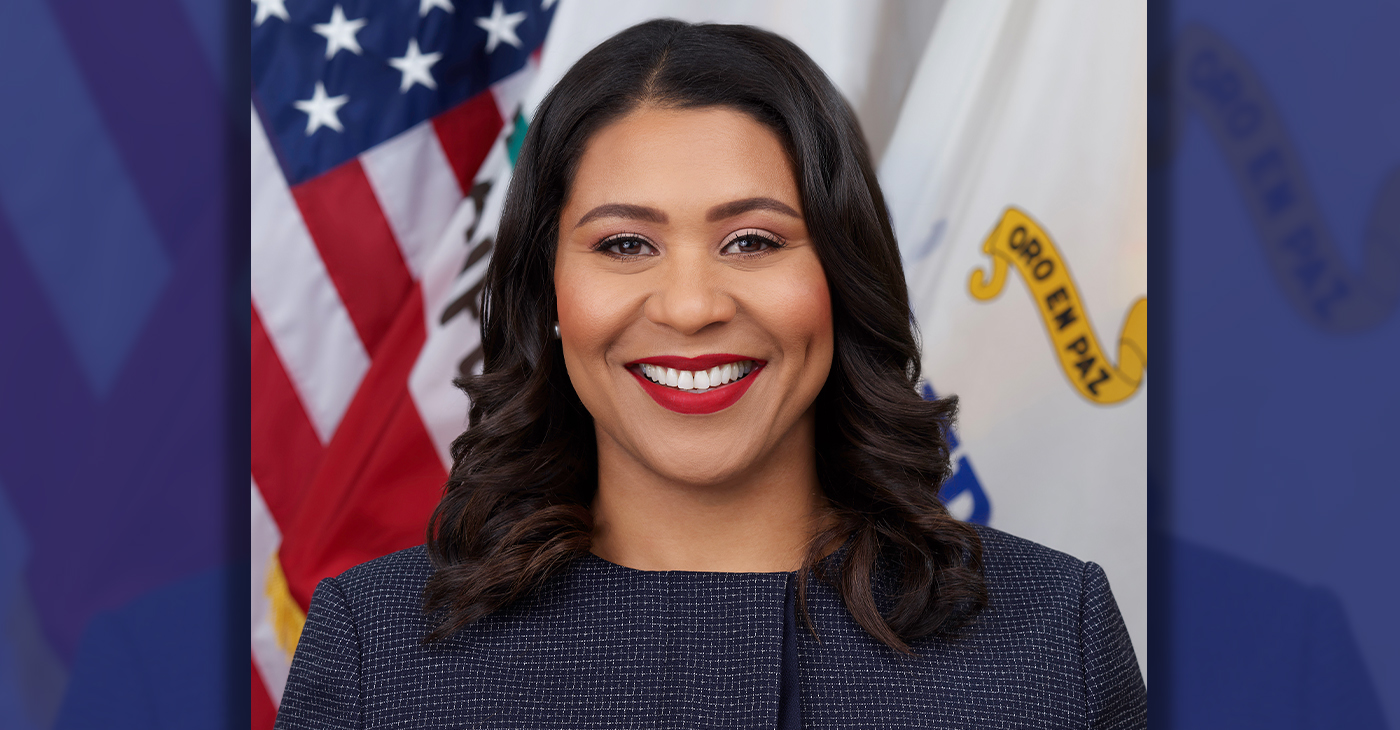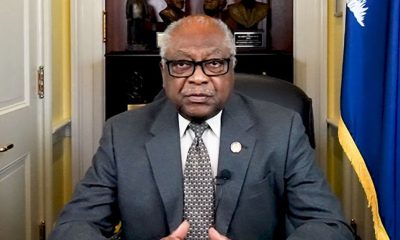Politics
5 Things to Know Before Obama Rolls Out His Budget Monday

In this March 4, 2014 file photo, copies of President Barack Obama’s proposed fiscal 2015 budget are set out for distribution on Capitol Hill in Washington. (AP Photo/J. Scott Applewhite, File)
Connie Cass, ASSOCIATED PRESS
WASHINGTON (AP) — A quick quiz:
Monday is —
a) Groundhog Day
b) Budget Day
c) A day for repeating the same old arguments over spending and taxes, only louder.
d) All of the above.
If you picked “d,” you’re in the proper spirit for federal Budget Day, which appropriately falls on Groundhog Day this year. It’s safe to predict we’re in for way more than six more weeks of Republicans and Democrats fighting over how to spend our money.
Here are five things to know before President Barack Obama’s 2016 budget fully emerges Monday:
___
IT’S JUST AN OPENING BID
Despite all the hoopla surrounding it, a president’s budget is merely a suggestion. That’s especially true this year, with Obama delivering his multi-trillion-dollar wish list to a Senate and House run by the opposition.
The Constitution gives Congress power to decide how to spend taxpayers’ money. After lawmakers get the president’s budget, they’ll set about coming up with their own, very different, spending plan. There’s a hitch, though — their legislation needs Obama’s signature to become law.
If the president and Congress can’t compromise on spending, that’s how we end up with a partial government shutdown. Republican leaders and Obama say they don’t want that to happen this year.
Still, the usual big disputes loom: Obama wants more spending and higher taxes on the wealthy. Most Republicans want to spend less — except on the military — and resist tax increases.
Plus, this year Republicans are promising to use spending bills to attack Obama’s signature health care law and to roll back his order giving some immigrants relief from deportation.
___
OBAMA WILL BID HIGH
The president will call for increasing spending on agency operating budgets by 7 percent next year, blowing through limits set in an earlier bipartisan deal.
Previewing the detailed document to be released Monday, the White House said it would call for spending about $74 billion more next year than the painful automatic cuts Obama signed into law in that 2011 deal commonly known as the “sequester.” Those harsh automatic cuts were originally set in motion as a threat that would force bipartisan agreement to replace them with something more sensible, but it didn’t work.
Obama would roughly divide the extra money he seeks between the military and domestic programs, such as college aid, medical research and child care.
The White House, without giving details yet, says Obama would offset his spending increases by cutting inefficient programs and closing tax loopholes. In that way, he could continue the recent trend of shrinking the nation’s annual budget deficits.
Republicans say that’s no good. They prefer to tackle the deficit by holding domestic spending in check, or trimming even more.
___
A BIG QUESTION: HOW MUCH DOES THE MILITARY GET?
The military brass has been pleading for relief from their automatic spending limits. Many lawmakers in both parties, eyeing terror attacks and trouble spots around the globe, are anxious to help.
Obama’s proposal to raise the defense budget by $38 billon would allow for more ships and fighter jets. By bundling the military increase with more domestic spending, Obama will pressure Republicans eager to boost the military budget to give in to some of his priorities.
Will Republicans insist on holding the line on spending, even if it means the Pentagon has to go without, too? And how far are Democratic lawmakers and Obama willing to go in using national defense as a bargaining chip?
___
DETAILS MATTER
If Congress is sure to reject and redo Obama’s budget proposal, you might wonder: Why does he bother?
For one thing, the law says he has to submit a budget to Congress by the first Monday in February, although Obama has sometimes missed that deadline.
Plus, the federal budget is a big deal. It’s expected to be in the vicinity of $4 trillion — that’s trillion with a “t” — for the fiscal year beginning in October.
It goes much deeper than political rhetoric about ending big government or boosting the middle class.
The budget carries thousands and thousands of decisions about concrete things the government does — like paying park rangers, Border Patrol agents and workers who answer IRS help lines. Spending money for air traffic control, medical research and food inspection. Weeding out ineffective programs and launching new ones that, hopefully, work better.
The exercise has gone awry over the last few years, leading to showdowns and a 2013 shutdown and failure to complete the normal budget process in a gridlocked Congress.
But the budget minutia that federal agencies sweat over and congressional committees are charged with overseeing is what keeps the U.S. government running.
___
MOST OF THE BUDGET IS ON AUTOPILOT
Running federal agencies isn’t even the half of it.
The biggest share of the budget goes to what’s called “mandatory spending” — ongoing payments that don’t need annual approval by Congress. Social Security, Medicare and Medicaid are the biggies. Others include unemployment checks, food stamps and pensions for veterans and government retirees.
To take on the nation’s long-term debt problem, lawmakers and the president would have to deal with these growing costs.
So far, attempts to reach this sort of “grand bargain” have failed, repeatedly.
____
Associated Press writers Josh Lederman and Andrew Taylor contributed to this report.
Follow Connie Cass on Twitter: http://www.twitter.com/ConnieCass.
Copyright 2015 The Associated Press. All rights reserved. This material may not be published, broadcast, rewritten or redistributed.
###
Activism
Oakland Post: Week of April 24 – 30, 2024
The printed Weekly Edition of the Oakland Post: Week of April 24 – 30, 2024

To enlarge your view of this issue, use the slider, magnifying glass icon or full page icon in the lower right corner of the browser window. ![]()
Bay Area
MAYOR BREED ANNOUNCES $53 MILLION FEDERAL GRANT FOR SAN FRANCISCO’S HOMELESS PROGRAMS
San Francisco, CA – Mayor London N. Breed today announced that the U.S. Department of Housing and Urban Development (HUD) has awarded the city a $53.7 million grant to support efforts to renew and expand critical services and housing for people experiencing homelessness in San Francisco.

FOR IMMEDIATE RELEASE:
Wednesday, January 31, 2024
Contact: Mayor’s Office of Communications, mayorspressoffice@sfgov.org
***PRESS RELEASE***
MAYOR BREED ANNOUNCES $53 MILLION FEDERAL GRANT FOR SAN FRANCISCO’S HOMELESS PROGRAMS
HUD’s Continuum of Care grant will support the City’s range of critical services and programs, including permanent supportive housing, rapid re-housing, and improved access to housing for survivors of domestic violence
San Francisco, CA – Mayor London N. Breed today announced that the U.S. Department of Housing and Urban Development (HUD) has awarded the city a $53.7 million grant to support efforts to renew and expand critical services and housing for people experiencing homelessness in San Francisco.
HUD’s Continuum of Care (CoC) program is designed to support local programs with the goal of ending homelessness for individuals, families, and Transitional Age Youth.
This funding supports the city’s ongoing efforts that have helped more than 15,000 people exit homelessness since 2018 through City programs including direct housing placements and relocation assistance. During that time San Francisco has also increased housing slots by 50%. San Francisco has the most permanent supportive housing of any county in the Bay Area, and the second most slots per capita than any city in the country.
“In San Francisco, we have worked aggressively to increase housing, shelter, and services for people experiencing homelessness, and we are building on these efforts every day,” said Mayor London Breed. “Every day our encampment outreach workers are going out to bring people indoors and our City workers are connecting people to housing and shelter. This support from the federal government is critical and will allow us to serve people in need and address encampments in our neighborhoods.”
The funding towards supporting the renewal projects in San Francisco include financial support for a mix of permanent supportive housing, rapid re-housing, and transitional housing projects. In addition, the CoC award will support Coordinated Entry projects to centralize the City’s various efforts to address homelessness. This includes $2.1 million in funding for the Coordinated Entry system to improve access to housing for youth and survivors of domestic violence.
“This is a good day for San Francisco,” said Shireen McSpadden, executive director of the Department of Homelessness and Supportive Housing. “HUD’s Continuum of Care funding provides vital resources to a diversity of programs and projects that have helped people to stabilize in our community. This funding is a testament to our work and the work of our nonprofit partners.”
The 2024 Continuum of Care Renewal Awards Include:
- $42.2 million for 29 renewal PSH projects that serve chronically homeless, veterans, and youth
- $318,000 for one new PSH project, which will provide 98 affordable homes for low-income seniors in the Richmond District
- $445,00 for one Transitional Housing (TH) project serving youth
- $6.4 million dedicated to four Rapid Rehousing (RRH) projects that serve families, youth, and survivors of domestic violence
- $750,00 for two Homeless Management Information System (HMIS) projects
- $2.1 million for three Coordinated Entry projects that serve families, youth, chronically homeless, and survivors of domestic violence
In addition, the 2023 CoC Planning Grant, now increased to $1,500,000 from $1,250,000, was also approved. Planning grants are submitted non-competitively and may be used to carry out the duties of operating a CoC, such as system evaluation and planning, monitoring, project and system performance improvement, providing trainings, partner collaborations, and conducting the PIT Count.
“We are very appreciative of HUD’s support in fulfilling our funding request for these critically important projects for San Francisco that help so many people trying to exit homelessness,” said Del Seymour, co-chair of the Local Homeless Coordinating Board. “This funding will make a real difference to people seeking services and support in their journey out of homelessness.”
In comparison to last year’s competition, this represents a $770,000 increase in funding, due to a new PSH project that was funded, an increase in some unit type Fair Market Rents (FMRs) and the larger CoC Planning Grant. In a year where more projects had to compete nationally against other communities, this represents a significant increase.
Nationally, HUD awarded nearly $3.16 billion for over 7,000 local homeless housing and service programs including new projects and renewals across the United States.
Activism
Oakland Post: Week of April 17 – 23, 2024
The printed Weekly Edition of the Oakland Post: Week of April 17 – 23, 2024

To enlarge your view of this issue, use the slider, magnifying glass icon or full page icon in the lower right corner of the browser window. ![]()
-

 Activism4 weeks ago
Activism4 weeks agoOakland Post: Week of March 27 – April 2, 2024
-

 #NNPA BlackPress4 weeks ago
#NNPA BlackPress4 weeks agoBeloved Actor and Activist Louis Cameron Gossett Jr. Dies at 87
-

 Community1 week ago
Community1 week agoFinancial Assistance Bill for Descendants of Enslaved Persons to Help Them Purchase, Own, or Maintain a Home
-

 Activism3 weeks ago
Activism3 weeks agoOakland Post: Week of April 3 – 6, 2024
-

 Business1 week ago
Business1 week agoV.P. Kamala Harris: Americans With Criminal Records Will Soon Be Eligible for SBA Loans
-

 Activism2 weeks ago
Activism2 weeks agoOakland Post: Week of April 10 – 16, 2024
-

 Community1 week ago
Community1 week agoAG Bonta Says Oakland School Leaders Should Comply with State Laws to Avoid ‘Disparate Harm’ When Closing or Merging Schools
-

 Community6 days ago
Community6 days agoOakland WNBA Player to be Inducted Into Hall of Fame

























































